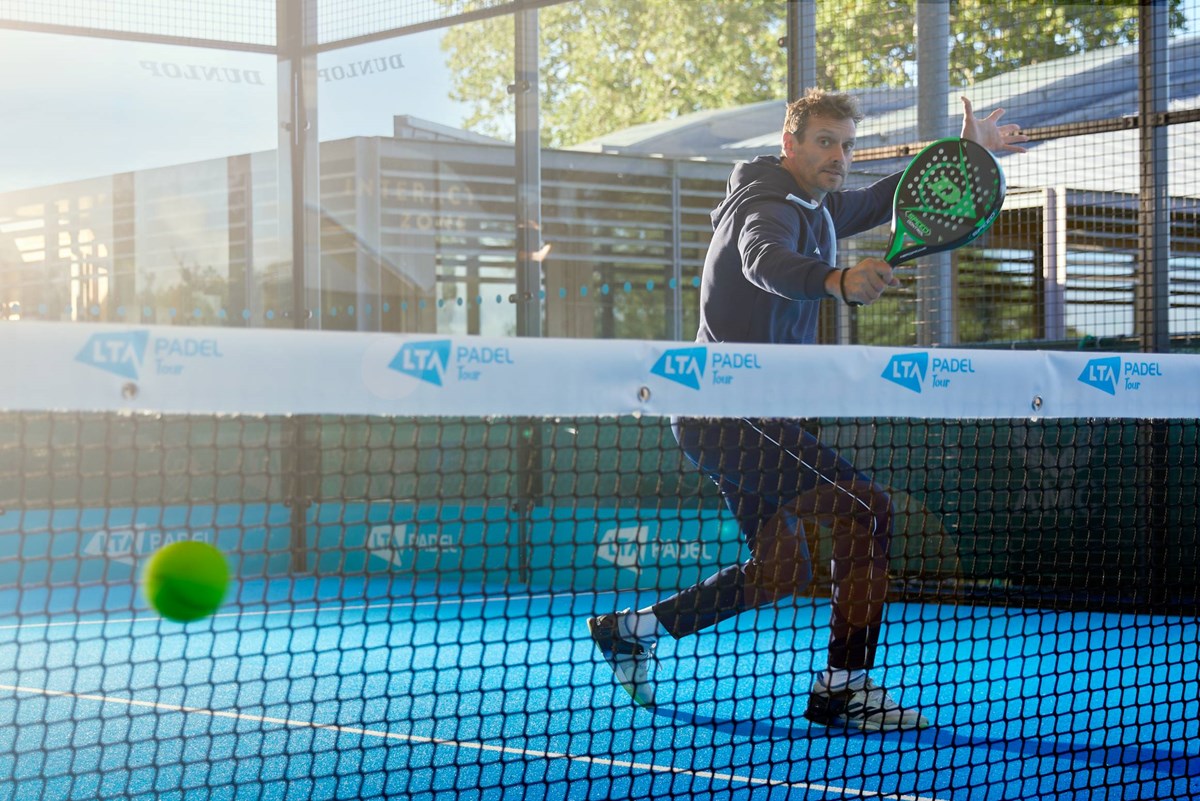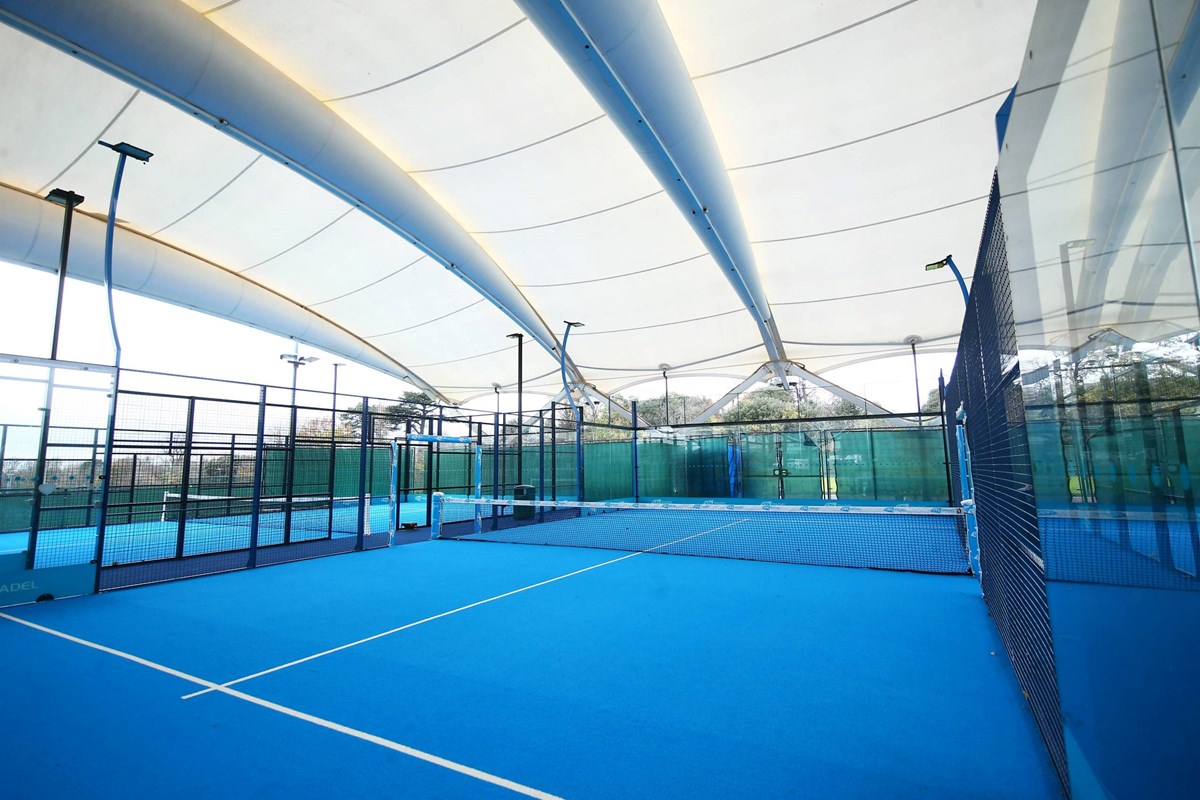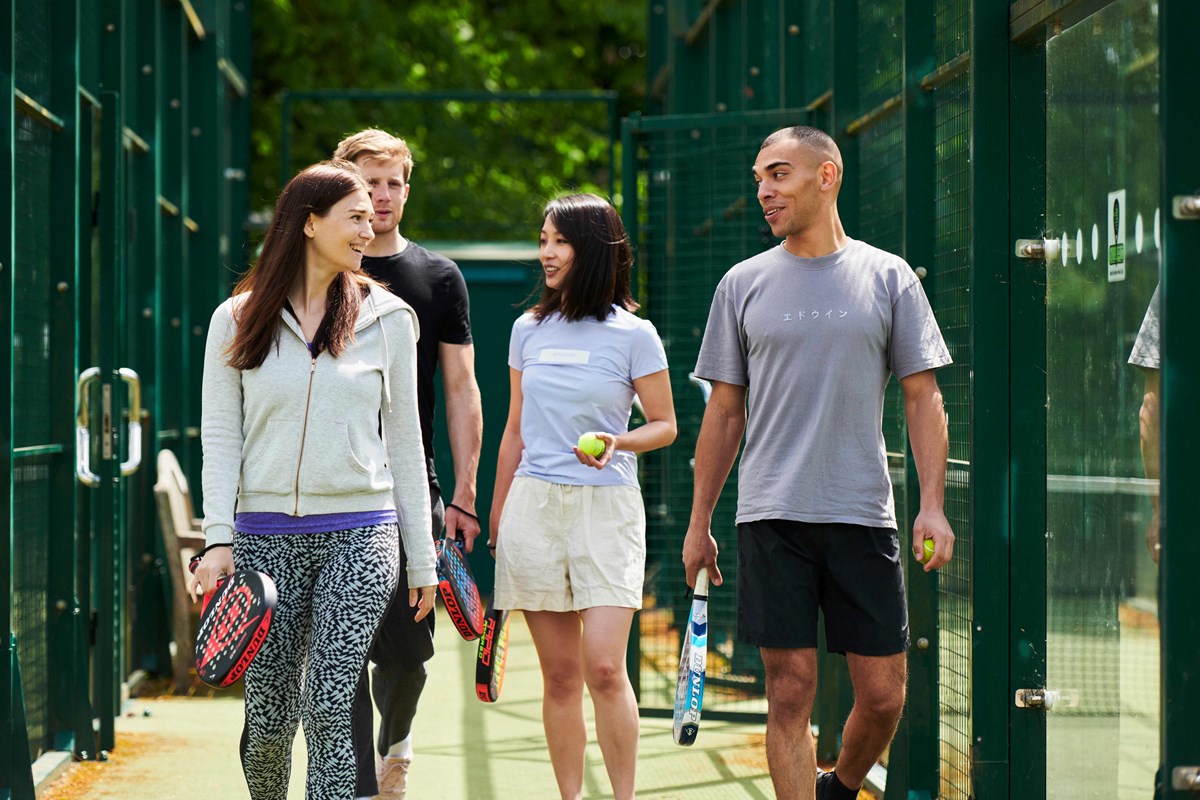Padel guide for tennis players - what you need to know

Tennis and padel go hand in hand. They use very similar skills, techniques, scoring and movements, but if you’re a regular tennis player starting out in padel, there are a few key differences you should know about.
Want to play padel alongside tennis? Here’s our tips for tennis players looking to get into padel and what you need to know.
What are the differences between tennis and padel?
First off you have the court. A padel court is much smaller than a tennis court and is surrounded by a glass wall that the ball can rebound off – once it’s hit the floor. A padel court is 20m x 10m, while a tennis court is 23.77m x 10.97m.
The wall is the biggest difference between the two. In padel you can allow the ball to hit the wall before you return it to your opponents or, you can hit the ball at the wall to help you get the ball back over the net, which can make for exciting and fast-paced rallies.
Find and book a padel court near you

Next up, you have the ball. While they look the same, a padel ball is slightly less pressurised so it doesn’t bounce as high or as fast as a tennis ball.
You’ve also got the rackets as well – tennis rackets have a frame with strings while a padel racket is perforated with a pattern of holes and is often made of either carbon fibre or fibreglass. The racket is shorter than a tennis racket but has a much thicker head to absorb the impact when hitting the ball. The head can come in a few different shapes designed for different styles, e.g., round-shaped for control and diamond-shaped for power.
While tennis can be played as both singles and doubles, padel is doubles-only and is considered a very social sport. When playing a point in padel you would always start off with an underarm serve that must be hit after one bounce.
Read more about the benefits of playing padel
What are the similarities between tennis and padel?
There are many similarities between the two sports – starting with the shots.
While padel does have a couple of specific shots, such as the Bajada and Bandeja, many are the same. Every point starts with an underarm serve into the opposing service box and then rallies will consist of forehands, backhands, volleys, lobs, drop shots, etc – just like you have in tennis.
Find out more about essential padel skills and techniques
While the rackets and balls are different, the rest of the kit you’ll need is the same. You can wear any activewear you want on court and the trainers for both should have a sturdy outer sole to give you some cushioning. Clay court tennis shoes are the most similar style of shoes that they use in padel.
Then there’s the scoring. Both tennis and padel are scored in the same way – most commonly by sets and games. To win one set, you have to win six games and be leading by two clear games.?
Similarly, to clinch a game, you must win four points with a two-point advantage. Games are scored as:
- 15 – one point
- 30 – two points
- 40 – three points
If the game goes to 40-40, this is called deuce, but you still need to win by two clear points to win the game.
However, you don’t always have to score when playing padel or tennis, just have fun getting on court and having a hit with your friends and family.
Frequently asked questions about padel
What are the tactical and technical differences between tennis and padel?

While a lot of the skills are the same, the tactics and techniques are quite different.
In tennis, power is a key element. If you hit a powerful shot, like a smash, it’s more likely to be a clean winner. However, in padel, more powerful shots are more likely to come back after rebounding off the glass, making it easier to return for your opponent.
Instead, padel is much more about control and precision – try keeping the ball low when it bounces off the glass so that your opponents will struggle to get it back in play.
Therefore, padel focuses more on short and sharp racket movements, while tennis uses bigger swings to generate more power.
Challenges for tennis players in padel
If you’re a tennis player looking to start playing padel as well, the biggest challenge at first will be getting used to using the back glass.
While your instinct might be to play every ball in front of you – like in tennis – the back glass can serve as a huge support once you get used to it.
When defending, allowing the ball to rebound off the glass can give you more time to hit your return and help you reach tricky shots into the corners.
Watch the videos below to see how best to play the ball off the glass and hit the ‘double glass’.
Pro tennis players in padel
In the past there have been examples of professional tennis players who have moved into padel later on in their careers.
One example is Marta Marreno, who had previously been Spain’s highest-ranked tennis player and featured in the singles and doubles WTA top 50, but after retiring decided to take up padel. Four years later in 2019, she became padel world No.1 for the first time in her career.